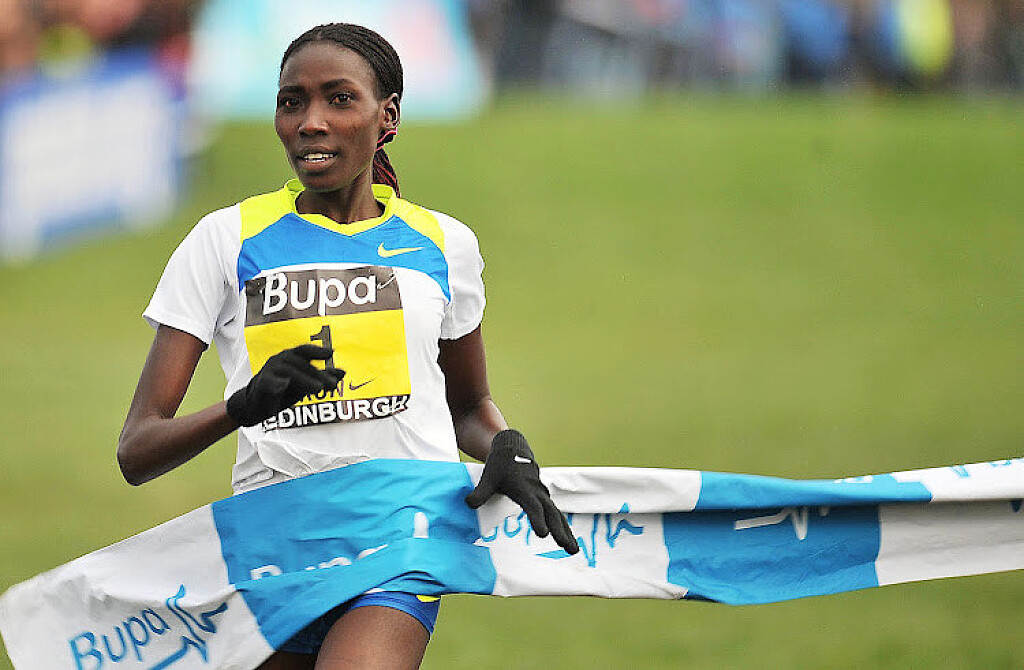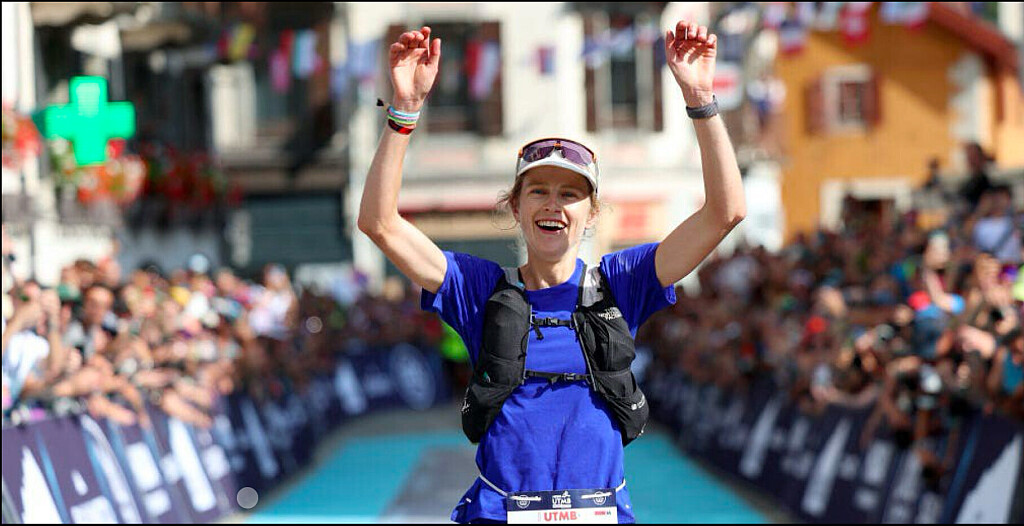Running News Daily
Top Ten Stories of the Week
9/7/2024
These are the top ten stories based on views over the last week.
Tristan Woodfine Chasing Canadian Title at TCS Toronto Waterfront Marathon
The past two years have been mostly good to Tristan Woodfine as he has recorded personal bests over several distances most significantly with his 2:10:39 finish at the 2024 Houston Marathon in January.
That makes him the sixth fastest Canadian marathoner of all time.
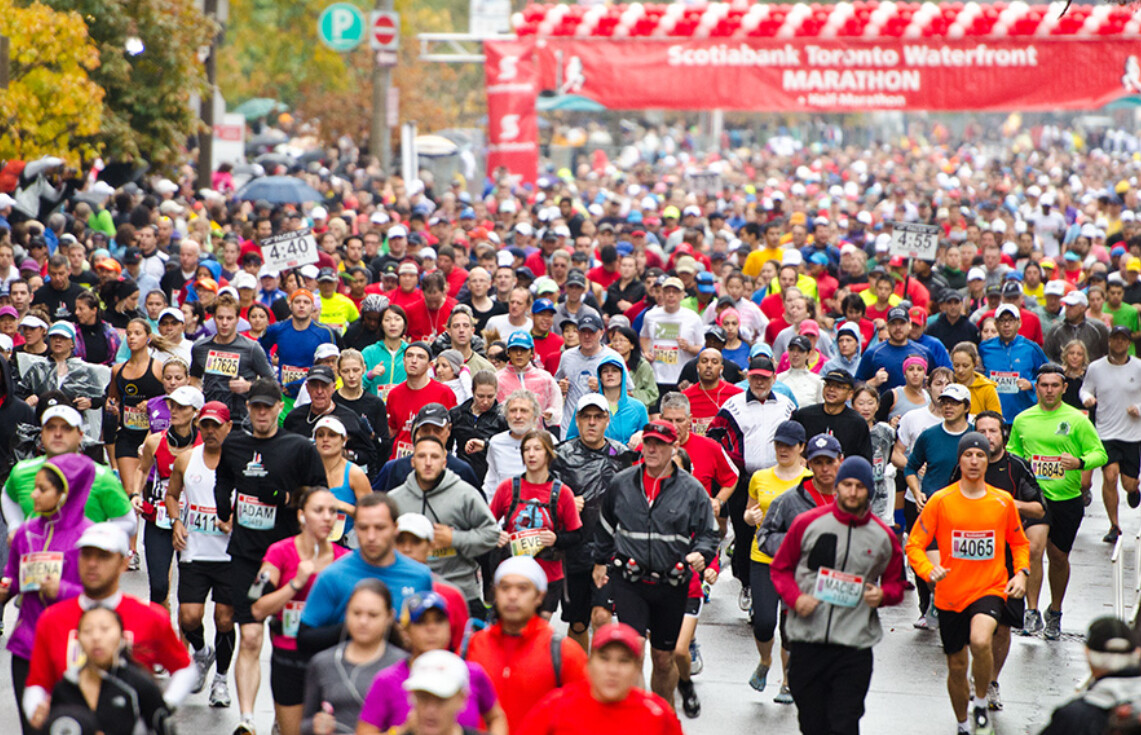
This uplift in fortune coincides with his seeking coaching advice from none other than two-time Canadian Olympic marathoner Reid Coolsaet.
Now the 31-year-old Woodfine has confirmed he will race the 2024 TCS Toronto Waterfront Marathon, October 20th, with the objective of running both a fast time and earning the Canadian Marathon Championship title. The event doubles as a World Athletics Elite Label race as well as the Athletics Canada National Marathon Championships.
“It’s local, close, the support is good,“ he says of his choice for an autumn marathon. “The Canada Running Series (team) always does a great job. I have run the course before.
“Getting under 2:10 would be nice, finally. We will see how the rest of the build goes. Ten weeks is still a long timeand things can change for better or worse - hopefully for better - and by the time Toronto comes around I’d definitely love to get a PB and make another step forward there.”
Woodfine, who is currently living just outside of Eganville, Ontario with his wife Madeline, ran the Toronto Waterfront Marathon once before. That was in 2019 when he finished 13th in a time of 2:13:16. But he has twice won the Toronto Waterfront Half Marathon (2022 and 2017) - run concurrently with the full marathon - and has also had success at the Toronto Waterfront 10K. That race includes a long section of the marathon course too.
Credit for his upward trajectory goes to Coolsaet.
“Reid has had so much experience in the sport,” Woodfine says of his coach. “He has got a lot of valuable insights on the training front and beyond. He has done a lot of racesand he knows the deal with which races might work well for your goals, that kind of thing.
“He has got so much experience on any aspect of training, racing, nutrition, injuries, he has seen so much he can really help out.”
One of the differences in Woodfine’s program since his association with Coolsaet comes as a surprise but might well be a valuable lesson for all runners.
“Some of the workouts in the base training period are almost a bit easier than what I was doing (before),” he explains. “I think maybe before I was pushing a bit too hard too early in the training base. So backing off a little bit when coming into the marathon block was probably one of the bigger things.”
Like most runners he has had his share of hiccups, most notably a nagging case of plantar fasciitis that saw him drop out of the Boston Marathon back in April. He blames a mechanical deficiency in his running form. But that is behind him now and as he enters his marathon specific buildup phase he is full of optimism.
Recently he raced the Falmouth Road Race in Massachusetts finishing 11th in 33:33 over the 7-mile course. A successful result at the shorter distance has added to his confidence.
“The last few weeks leading into Falmouth I did get my longer mileage in,” he reveals. “I got a 37km long run in there just to get things ready. The week before Falmouth was 220km. In this (Toronto) buildup block I would like to get up to a maximum of 250 or 260km.”
Besides a personal best, Woodfine is fully aware that a national championship offers the chance for maximum World Athletics points that would count heavily in 2025 World Championships qualifying. Those Championships are set for Tokyo.
“I talked to Reid about trying to qualify for Tokyo,” he admits. “I have had a few sit-downs (with him). I’d get a fair amount of points with another good performance with a strong time. A solid finish in Toronto would put me in a good position.”
Unlike many elite runners Woodfine doesn’t have a shoe sponsor. After completing his paramedic studies at the Ontario Health and Technology College he has put on hold a career in that field to focus on his running. To make ends meet he has been doing some online coaching, a sideline that continues to grow.
“I definitely love helping other runners achieve their goals,” he adds. “I also do some remote work for a pharmacy in the area. It’s best described as inventory and purchasing. It’s very flexible and works great with running.”
Like many elite runners the Olympic Games has been a target for Woodfine. In 2020 he beat the Tokyo Olympics qualifying standard running 2:10:51 at the London Marathon and thought he’d achieved his dream of being an Olympian. But when Cam Levins ran 2:10:14 in Austria six months later it was Levins who was chosen for the team and not Woodfine. This, despite the fact Woodfine had beaten Levins in London by well over a minute.
Despite falling short of the Paris Olympic standard with his Houston Marathon personal best he still harbours an Olympic dream.
“Yes it is still a goal. I try not to put as much emphasis on the Olympics being an ‘all or nothing’, a defining factor of success for my career,” he declares. “I think that can kind of end up making you miserable. Whether you are going to the Olympics or not. For sure, it’s a goal.
“I am in this for another Olympic cycle and hopefully I can be on the start line in LA - the third time is a charm. But I am really focused on each year and trying to enjoy each race for what it is.”
The TCS Toronto Waterfront Marathon is an obvious step forward in his career path.
(09/03/24) Views: 166Paul Gains
UTMB Is Having a Golden Moment. But It’s Delicate.
After a year that included a maelstrom of controversy, the world’s most prominent ultra-trail running event has righted its path
“It felt like a golden era of trail running.”
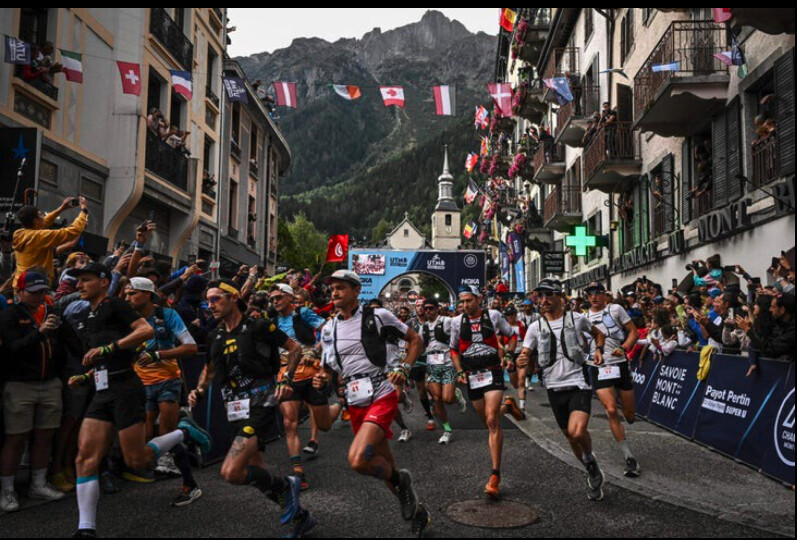

That quote came from Keith Byrne, a senior manager at The North Face and a UTMB live stream commentator for nearly a decade, who was talking about last summer’s UTMB World Series Finals in Chamonix, France.
The UTMB races during the last week of August last summer were, I thought, the most alluring in the event’s 20-year history.
After years of being frustrated by the course, American Jim Walmsley finally put it all together for a victorious lap around Mont Blanc. In doing so he became the first U.S. man to win the race, setting a course record of 19:37:43. He and his wife, Jess, had moved from Arizona to live full-time in France to make it happen. And then there was Colorado’s Courtney Dauwalter, who won the race handily in 23:29:14 to notch her third victory and continue the strong legacy of American women on the course. The win felt extra historic because it made her the first person to win Western States, Hardrock, and UTMB in the same year—arguably the three most legendary and competitive 100-mile events in the world, and she dominated each one.
The events came off without a hitch and included record crowds in Chamonix, plus a record 52 million more tuning into the livestream.
Throughout the fall and winter, harmony and happiness seemed to give way to chaos and discontent. But a year later, as the UTMB Mont Blanc weeklong festival of trail running kicks off on August 26, everything seems back to normal in Chamonix. What happened along the way is a tale of drama, perhaps both necessary and unnecessary, all of it culminating in course corrections by the multinational race series.
In short, what a year it has been for UTMB.
And now, hordes of nervous and excited runners from all corners of the globe are descending on Chamonix for this year’s UTMB Mont-Blanc races. Registration for UTMB World Series events is reportedly up about 35 percent year over year with even greater growth in interest for OCC, CCC and UTMB race lottery applications. There is more media coverage, more pre-race hype, and more excitement than ever before. More running brands are using the UTMB Mont Blanc week to showcase their new running gear with media events, brand activations, and fun runs. Even The Speed Project—although entirely unrelated to UTMB—chose Chamonix as the starting point of its latest so-called underground point-to-point relay race to try to catch some of the considerable buzz UTMB is generating.
So what happened? Did the UTMB organization do its due diligence and make amends with several significant changes in the spring? Was the angst and stirring of emotions just not as widely felt as the fervent bouts of Instagram activism claimed it to be? Have the participants and fans of the ultra-trail running world suffered amnesia or become ambivalent? Or is it all a sign of the race—and the entire sport of trail running—going through growing pains as it adjusts to the massive global participation surge, increased professionalism, and heightened sponsorship opportunities?
On the eve of another 106-mile lap around the Mont Blanc massif, I wanted to take a look at what happened and the current state of UTMB’s global race series that culminates here in Chamonix this week.
We caught a glimpse of what was to come shortly before UTMB last year, when the race organization announced the European car company Dacia as its new title sponsor. A fossil-fuel powered conglomerate didn’t sit well with some fans of the event, coming amid an era of widespread climate doom (even though the brand would be highlighting its new Spring EV at the UTMB race expo.) The Green Runners, an environmental running community co-founded by British trail running stars Damian Hall and Jasmin Paris, called it an act of “sportswashing” and released a petition calling on UTMB to denounce the partnership. (Hall even traveled all the way to Chamonix to deliver the petition in person.)
These grumblings of discontent and others that followed exploded into a social media firestorm shortly after UTMB. In October, it became public that UTMB had moved to launch a race in British Columbia, Canada, just as a similar event in the same location was struggling with permitting. A he-said, she-said back-and–forth left onlookers with whiplash. Then on December 1, UTMB livestream commentator Corrine Malcolm announced on Instagram that she had been fired and in late January, a leaked email from elite runners Kilian Jornet and Zach Miller to fellow athletes called for a boycott of the race series. All of it, jet fuel for social media algorithms.
“We’re at a turning point in trail running, but we can keep the core values if the community stands up,” the Pro Trail Runners Association secretary, Albert Jorquera, told me at the time.
In the midst of these dramas, I interviewed race founders Catherine and Michel Poletti over lunch at a Chamonix cafe. For nearly a decade now, I have met with the couple for candid conversations that helped frame online articles and magazine stories, and most recently for the book, The Race that Changed Running: The Inside Story of UTMB.
I plunged headlong into two articles with hopes of explaining it all. There was so much heat swirling around the UTMB stories, and so little light.
“The very thing that made ultrarunning so bonding was being torn apart by the community itself through social media,” said Topher Gaylord. A former elite runner who tied for second in the inaugural UTMB in 2003, Gaylord engineered UTMB’s first title sponsorship with The North Face and has been a close supporter of the Polletis for 20 years. “Some players are using social media to divide the community. That’s super disappointing.”
To me, it felt like the aggressive online activists were winning the day. Trail running suddenly seemed polarized, infected with the intertwined social media viruses of false indignation and close-mindedness. Twice, I deep-sixed my article drafts. Friends and editors convinced me they wouldn’t be read dispassionately. Who wants to be handed a fire extinguisher, when your goal is to torch the house?
Well, what a difference eight months can make. We now have some perspective and, with it, some answers.
Since its earliest days, UTMB’s volunteer founding committee believed in the values of the sport. The very first brochure produced for the race—a mere sheet of paper—featured a paragraph on values. In later years that statement became much more comprehensive, expanding to cover a wide range of topics and the race’s mission to support and protect them.
But maintaining those values in an organization that has gone from a singular race with a literal garden-shed office to a 43 global event series with a staff of more than 70 full-time employees is tricky at best. In an interview once, Michel Poletti paused, asking if I had seen a photo of a mutual friend that was making the rounds. He was climbing one of Chamonix’s famed needle-sharp aiguilles, one foot on each side of a razor sharp ridge—a perilous balancing act, big air on each side. It was his metaphor for trying to move ever up, while balancing business growth and heartfelt values.
Over the course of dozens of hours of interviews with the Polettis, I came to learn one thing: UTMB always moves forward up the ridge. In the process, UTMB corrects its course. It starts with a careful analysis after each edition, evaluating pain points in areas such as logistics, security, media, traffic, and others, discussing how they can be addressed. Historically, those course corrections haven’t been at the pace others might want—especially since the social unrest that developed during the Covid pandemic—but the organization has a reliable pattern of steadily addressing concerns.
And so, not too many weeks after that lunch meeting, UTMB set to work. First came a heartfelt effort they kept under the radar—traveling around the U.S. to listen and learn. They spent two weeks in the U.S. in February, visiting with American athletes, race directors, journalists, consultants, and their Ironman partners. “We need to learn from our mistakes and from this crisis,” Michel said.
Methodically over the ensuing months, UTMB rolled out a series of changes. Some were aimed at directly addressing the controversies, others were overdue for what is, by any metric, the world’s premier ultra-trail running event.
“My hope is that the trail running community understands that we are human,” Catherine had told me over the winter.
Four months ago, at the end of April, the race organization announced that Hoka would become the new title sponsor of UTMB Mont-Blanc and the entire UTMB World Series through 2028. It was a huge move because Hoka, one of the biggest running brands in the world, essentially doubled-down on its support of UTMB and trail running in general. The five-year deal brought benefits other than cash, too. Hoka has a strong history of inclusivity and growing representation among marginalized communities, an area UTMB has announced it intends to focus more on beginning this year. The deal also moved Dacia out of the title sponsor limelight, instead bringing a brand with a strong reputation in trail running to the fore.
Dacia was shifted to the role of a premier partner in Europe, and now plays an integral part in a new eco-focused mobility plan UTMB updated in July. Fifty of their cars can be signed out for use by over 70 staff and 2,500 volunteers, encouraging them to arrive in Chamonix using public transportation instead. The move is estimated to eliminate 200 vehicles driving into the valley. (The organization’s new mobility plan will transport an estimated 15,000 runners and supporters, eliminating the need for approximately 6,000 cars during the UTMB Mont-Blanc week. On average, a bus will run every 15 minutes between Chamonix and Courmayeur, Italy, and Chamonix and Orsières, Switzerland.)
In May, UTMB announced a new anti-doping policy it had developed with input from PTRA. The organization committed to spending at least $110,000 per year, money that will be allocated to test all podium finishers and a randomized selection of the 687 elite athletes in attendance. The new policies will be implemented by the International Testing Association, an independent nonprofit that has also conducted two free informational webinars for the 1,400 UTMB Mont Blanc elite runners.
Not long after the announcement, Catherine Poletti suggested this was just a start. Speaking at TrailCon, a new conference held in Olympic Valley, California, on June 26, she said, “It’s a first big step for us. And we’ll continue to develop this policy.” (The most important anti-doping protocol may still be beyond UTMB, however. “The elephant in the room is that we need a coordinated approach to establish out-of-competition testing,” Tim Tollefson, an elite U.S. runner and director of the Mammoth TrailFest in California, who spearheaded independent testing at his event in 2023. “Individually, we’re just lighting our money on fire.”)
In mid-June, UTMB addressed a longtime issue with top runners—prize money. A chunk of the funding from the ratcheted-up Hoka sponsorship was directed to supporting the bigger prizes for the OCC, CCC and UTMB races in Chamonix—about $300,000 this year, nearly double of 2023—as well as more prize money for the three UTMB World Series Majors. (The sequence was intentional. The organization wanted a new doping policy in place before increasing prize purses, since large cash awards are often thought to lead to a growth in doping.)
It’s a move that was long overdue—the most celebrated marquee event in any sport should reward its top athletes more than any other event—but not possible without Hoka’s increased involvement. The proposal was shared with PTRA in advance of the announcement, and the group provided feedback that was incorporated into the final divvying up of the purse. The total amount spent on prize money across all UTMB races is now more than $370,000.
“We increased the prizes quite dramatically,” said UTMB Group CEO Frédéric Lenart. “It’s very important for us to support athletes in their living.”
Finally, just last week, UTMB announced a new department within the company called “Sport and Sustainability.” The group is headed by longtime UTMB staffer Fabrice Perrin. He was a driving force behind the creation of UTMB’s live coverage back in 2012. Heading up relations with the pro athletes will be longtime elite trail runner Julien Chorier. Nicolas LeGrange, UTMB’s Director of Operations, will be in charge of sustainability and DEI, Diversity, Equity Inclusion.
On the DEI front, UTMB is calling its strategy “leave no one behind,” and they promise new initiatives coming this fall so that, according to Perrin, “every athlete feels a sense of belonging within our community,” he says. “I am committed to ensuring that we perfect symbiosis with the entire community of trail running.”
UTMB has already begun to embrace adaptive athletes, something it was criticized for lacking as recently as last year. This year’s UTMB Mont Blanc races will feature a team of 12 adaptive athletes who will be participating in the MCC, OCC and UTMB races. Under the direction of adaptive athlete and team manager Boris Ghirardi, who lost his left foot and part of his left leg after a motorcycle accident in 2019, the race organization recruited the athletes from around the world to showcase how adaptability and resilience are key elements of the UTMB values.
“I proposed this program to make a concrete action around adaptive athletes and the inclusion policy, and to prove that it was possible,” he said this weekend. “If you really get everyone working on this, you can change the game.”
And with that, UTMB Mont-Blanc 2024 is underway, resuming the golden era status that Byrne raved about last August. Starting this past weekend, banners have been unfurled over Place du Triangle de l’Amitié in the heart of Chamonix, kicking off the carefully choreographed trail running Super Bowl that is UTMB. The excitement begins on August 26 and culminates as the race for UTMB individual crowns reach a tipping point on August 31. (The golden hour of the final finishers on September 1 will be something to behold, too.)
“It’s like wrapping the Tour de France, Burning Man, and the biggest industry trade show into one giant, week-long festival,” Gaylord says. “It’s an amazing week for our sport, one of the biggest showcases we have.”
The aura of Chamonix and the opportunity to run a race there is drawing as much or more interest than ever before. It is perhaps the essence of what will keep the UTMB World Series afloat into the distant future. Runners will continue to chase Running Stones at qualifying events around the world, knowing the carrot of running one of the races around the Mont Blanc massif is second to none.
Trail running is booming on a global scale, and it’s not just UTMB shouldering the burden or reaping the benefits. The Golden Trail World Series, Spartan Trail Running, Xterra Trail Running—and even the World Trail Majors, Western States 100, and dozens of other more prominent trail races—are all trying to get a bigger piece of the pie, either by way of money or relevance.
UTMB Mont Blanc, as trail running’s most important race, is at the very beating heart of it all. And trail running is a soul sport, so when change and growth happen, it can feel threatening to all of us whose lives have been changed for the better by time spent with dirt underfoot and blue sky above. UTMB is big enough now that it’s urgently important that it make changes judiciously and preemptively.
As the world’s most significant trail race, the consequences of UTMB’s choices will ripple throughout the ecosystem. UTMB understands this. “Do we owe something to trail running? Yes, of course we do,” Michel Poletti once told me. That’s truer than ever now.
At TrailCon in June, Catherine Poletti summed up UTMB’s challenge. “Trail running is changing around the world. We’ve seen that evolution over 20 years. We need to adapt, to find a good balance, to accept different models and ways of organizing.”
Back in August 2021, I wrote an article here called, “UTMB, Don’t Break Our Hearts.” It came the summer after the organization announced its investment from the Ironman Group. Change– big change– was everywhere. Could the race around Mont Blanc maintain its soul and passion amid talk of multinational sports marketing, we all wondered? Michel Poletti closed the interview by saying, “Nous prenons un rendez-vous dans trois ans.” Simply translated: “We’ll schedule an interview in three years.”
Three years is now, and both UTMB and trail running’s landscape have changed dramatically, if not literally then certainly figuratively. We’ve seen UTMB adjust its rudder this past year, responding to concerns. Perhaps not at the pace any individual or specific group would like, and not to the extent some would wish. But it’s happening, and for that we should all breathe a cautious sigh of relief. Because if you love trail running, you have to care about what happens at the world’s biggest trail race.
As I write this in Chamonix very early on the morning of August 26, overcast skies are parting and blue skies are in the offing. The forecast for the week ahead is for bright sun with a few clouds. It’s a workable enough metaphor for trail running’s future. But one thing has to happen for it to come true. The race that changed running needs to continue to listen to its stakeholders around the world, and engage with them as it grows and develops in the days ahead. If that happens, Byrne’s vision of the golden age of our sport just might linger on. I can hope.
(08/31/24) Views: 121Outside Online
‘Let’s make history’ – American sprinter praying for historic victory against Omanyala, Tebogo & Co in Rome
The Olympics bronze medalist is keen to win in style against the likes of Ferdinand Omanyala and Letsile Tebogo at the Rome Diamond League on Friday night.
Olympics bronze medalist Fred Kerley wants to make history at the Rome Diamond League on Friday night.
Kerley is among the headline acts at the Diamond League meeting in the Italian capital as he looks to make it back-to-back wins in 100m after his victory in Silesia last weekend.
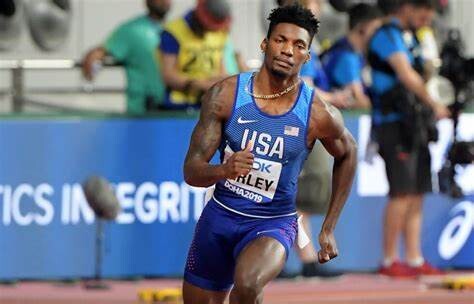
The American, known to talk big, is praying that things go even better in Rome after claiming that his win in Silesia was a “trash race.”
“Father God protect and guide on this track today let make history,” Kerley posted on X just hours to the race.
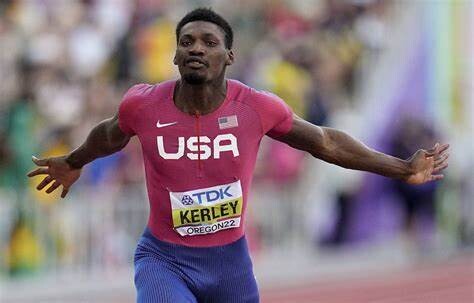
Kerley is up against a star-studded line-up that includes Africa’s fastest man Ferdinand Omanyala, Olympics 200m champion Letsile Tebogo, Itlian and home favourite Marcell Jacobs as well as fellow American Christian Coleman.
He will hope that lighting strikes twice after clocking 9.87 to win in Silesia ahead of Omanyala, who finished second in 9.88, and Ackeem Blake of Jamaica, whose personal best of 9.89 yielded third place, as Jacobs, clocked 9.93 for fourth place.
Kerley was not impressed by his performance in the Polish city and gave negative reactions post-race.
“Trash race but on to Rome,” Kerley started by posting on X before revealing much more in a post-race interview.
"I know the race was shi**y as hell. I just ran and not being technically sound, but I know I'm about to get an earful once I get to my phone,” he said.
(08/30/24) Views: 105Joel Omotto
Masai, Kiptanui spearhead Kenya's charge at Frankfurt Marathon
The 2021 Chicago Marathon second runner-up Eric Kiptanui and Beijing 2008 Olympics 10,000m bronze medalist Linet Masai will spearhead Kenya’s charge at the Frankfurt Marathon set for October 27.
Race organizers anticipate a turnout of 12,000 participants, with expectations of a thrilling, fast-paced competition.
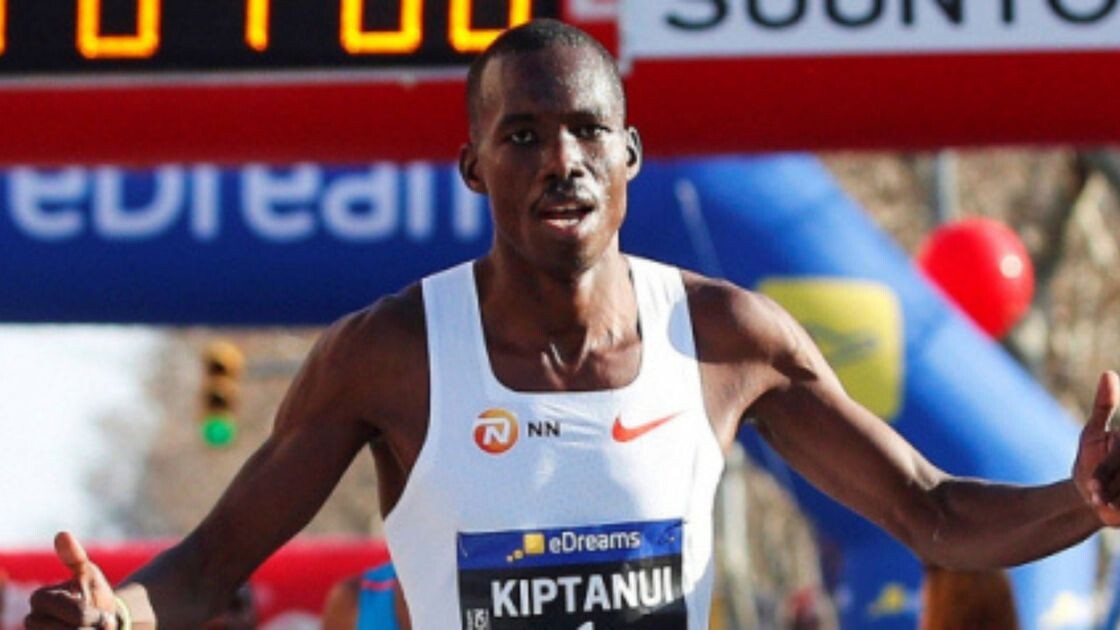
“We are looking forward to another high-class race that will certainly hold one or two surprises. After having the fastest race in the event's history last year in terms of the two winning times added together, we are excited to see what will be possible on October 27,” said race director Jo Schindler.
During last year’s race, Brimin Kipkorir sealed the title in 2:04:53 ahead of Ethiopian duo of Mulugeta Asefa (2:06:47) and Guye Idemo (2:07:44).
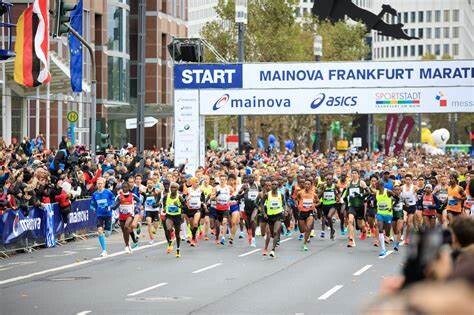
In the women’s elite race, Ethiopia’s Buzunesh Getachew (2:19:27) beat Winfred Moseti (2:20:55) and Sharon Chelimo (2:22:07) to the title.
Kiptanui enters the race with an impressive resume, including half marathon victories in Berlin (58:42) and Lisbon (1:00:05) in 2018, and Barcelona in 2019 (1:01:04).
In the marathon, he boasts a title from the Xiamen and Tuscany Marathon in 2021 (2:05:47-PB). He also secured runner-up finishes in Dubai 2020 (2:06:17) and Chicago 2021 (2:06:17).
His other accolades include a victory at the 2017 Madrid 10k Road race (27:34).
His main rival will be Ethiopia’s Herpasa Negasa, who finished second at the 2022 Seoul Marathon.
Negasa holds a personal best of 2:03:40 set during the 2019 Dubai Marathon where he placed second behind compatriot Getaneh Molla (2:03:34).
The Ethiopian’s accolades include runner-up finishes at the Hengshui 2018 Marathon (2:09:14), Lyon 2015 (2:10:17) and a second runner-up finish at the 2018 Warszawa Marathon (2:11:46).
In the women’s race, Masai will face a stern challenge from 2022 Berlin Marathon third-place finisher Tigist Abayechew.
Masai brings a rich trophy cabinet that includes bronze from the Beijing 2008 Games in the 10,000m (30:26.50) and a world title in the same event from the 2009 Berlin World Championships (30:51:24).
The 34-year-old is also a gold medalist from the 2007 World Cross Country Championships and a three-time silver medalist from Amman 2009, Bydgoszcz 2010 and Punta Umbria 2011.
In the full marathon, Masai holds a lifetime best of 2:23:46 from the 2018 Amsterdam Marathon where she finished fifth.
Abayechew holds a best of 2:18:03 she set during the Berlin Marathon, where she placed third behind Rosemary Wanjiru (2:18:00) and Tigst Assefa (2:15:37).
(08/31/24) Views: 103Teddy Mulei
Vivian Cheruiyot confirms next stop with eyes on victory
The four-time world champion has confirmed where she will run next after her third-place finish at the Paris Marathon in April.
Vivian Cheruiyot has confirmed her next race after her third-place finish at the Paris Marathon in April.
Cheruiyot will race at the AJ Bell Great North Run scheduled for September 8 where she will line up against tough opponents including Eilish McColgan.
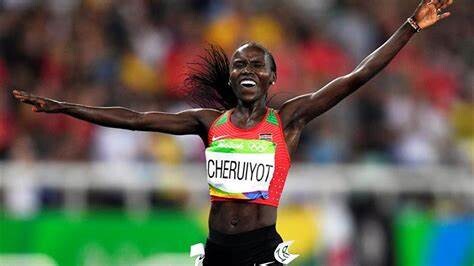
Cheruiyot has raced three times this season, opening her season in Paris and proceeding to the National Cross-Country championships where she finished 16th before racing at the Kilimanjaro Half Marathon where she finished second.
On her part, McColgan holds the British records on the roads at 5km, 10km, 10 miles and half-marathon and has won other Great Run events and in 2021 finished runner-up to Hellen Obiri at the Great North Run.

An injury set her back at the Paris Olympic Games but is expected to bounce back at the Big Half in London on September 1 before heading to the Great North Run and then the Vitality London 10,000 on the roads of London.
Another challenger will be Sheila Chepkirui who was third behind McColgan at the 2022 Commonwealth Games in the 10,000m.
The Ethiopian charge will be led by Senbere Teferi, the former women-only 5km world record-holder with Mergetu Alemu also in the mix. British-based Kenyan Mary Ngugi-Cooper will also be competing at the event.
The men’s race will be headlined by Marc Scott who will try to reclaim the title he won in 2021. He faces a stern test from Berihu Aregawi, the Ethiopian who won the Olympic 10,000m silver.
Aregawi is a formidable opponent since he also went No.3 on the world all-time rankings for 3000m behind Jakob Ingebrigtsen’s world record in Poland.
Sisay Lemma, 2023 Boston Marathon winner Evans Chebet and Kenya’s NYC Half winner from earlier this year, Abel Kipchumba will also be in the mix.
(08/31/24) Views: 98Abigael Wafula
American Katie Schide Shatters Courtney Dauwalter’s Course Record to Win UTMB
She’s now the third woman to win both Western States and UTMB in the same year.
Katie Schide is on a tear.
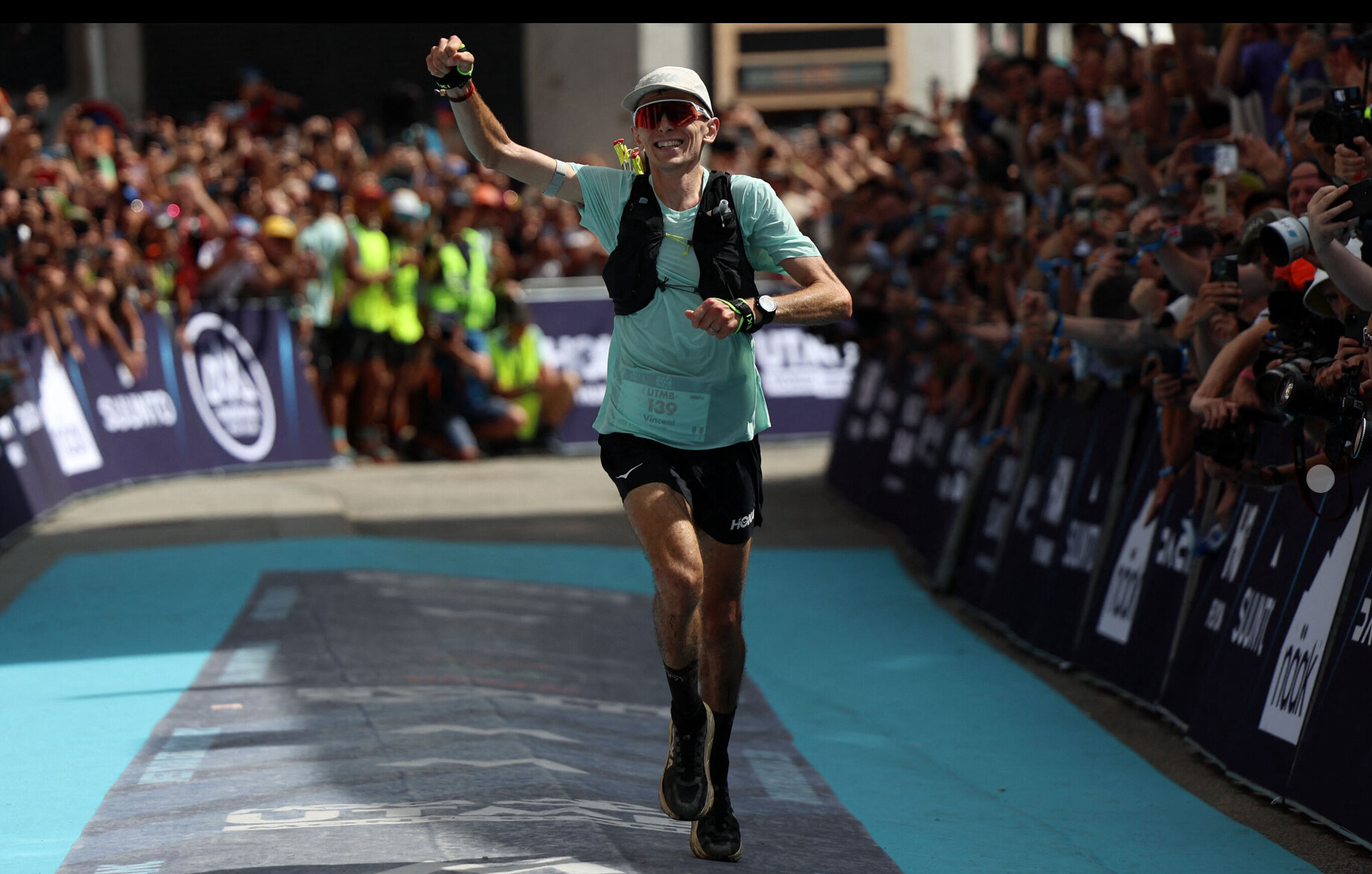
On Saturday, the American won the women’s race at the Ultra-Trail du Mont-Blanc (UTMB) in dominant fashion, finishing the 109-mile race in 22 hours, 9 minutes, and 31 seconds. Her time is 21 minutes faster than Courtney Dauwalter’s course record of 22:30:54 from 2021.
Schide, 32, is undefeated this year, winning the Canyons 100K in April and the prestigious Western States 100 in June.
Ruth Croft of New Zealand was 39 minutes behind Schide in second place (22:48:37). She passed Canada’s Marianne Hogan—who would finish third in 23:11:15—just after the 100-mile mark. Dauwalter, who won the Hardrock 100 on July 12, did not compete in this year’s edition.
In the men’s race, Vincent Bouillard of France was not favored to win, but he ultimately took the crown. He went to the lead after 48 miles and never relinquished it, crossing the finish line in Chamonix in 19:54:23. His compatriot, Baptiste Chassagne, was next to finish in 20:22:45, while Ecuador’s Joaquin Lopez placed third (20:26:22).
Last year’s champion, Jim Walmsley of the U.S., withdrew just after 50 miles because of a knee issue, according to a post on his Instagram story. He remains the only American man to win the race.
UTMB has been contested since 2003. The course—which slightly changes year-to-year—starts and ends in the French Alpine town of Chamonix and traverses through Italy and Switzerland along the way, covering over 30,000 feet of elevation gain.
This is Schide’s second time winning the event after taking top honors in 2022. Originally from Maine, Schide now trains in France and is sponsored by The North Face.
In the final 7 kilometers, a downhill section, she was over 20 minutes ahead of course record pace, but she started limping. The buffer, however, was enough, and by the end, the hitch in her stride had mostly dissipated.
Schide said in a post race interview on the UTMB broadcast that her main goal was to dip under the 22-hour barrier, followed by a secondary goal breaking Dauwalter’s time from 2021. Schide went out hard in the first half—like she did in 2022—but she said winning two years ago gave her some much-needed context.
“I think this race, I just went in more confident in myself and I wasn’t surprised that I was fast,” she said. “Whereas in 2022, I was kind of freaking out because I was like “Oh, I didn’t really mean to do that.’ But this time, I meant to do it, and I was just focused on trying not to die too hard at the end.”
Schide now joins Dauwalter (2023) and Nikki Kimball (2007) as the third woman to win both Western States and UTMB in the same year.
(09/01/24) Views: 98Kerr aims for 'unprecedented' Olympic hat-trick
Josh Kerr is targeting an "unprecedented" hat-trick of Olympic 1500m medals after making history with his silver at this year's Paris Games.
The 26-year-old took bronze from the delayed 2020 Tokyo Games and became the first Scot to win at two different Olympics stagings, which he described as "a nice accolade for sure".

"That’s an awesome stat for me," he told Scottish Athletics.
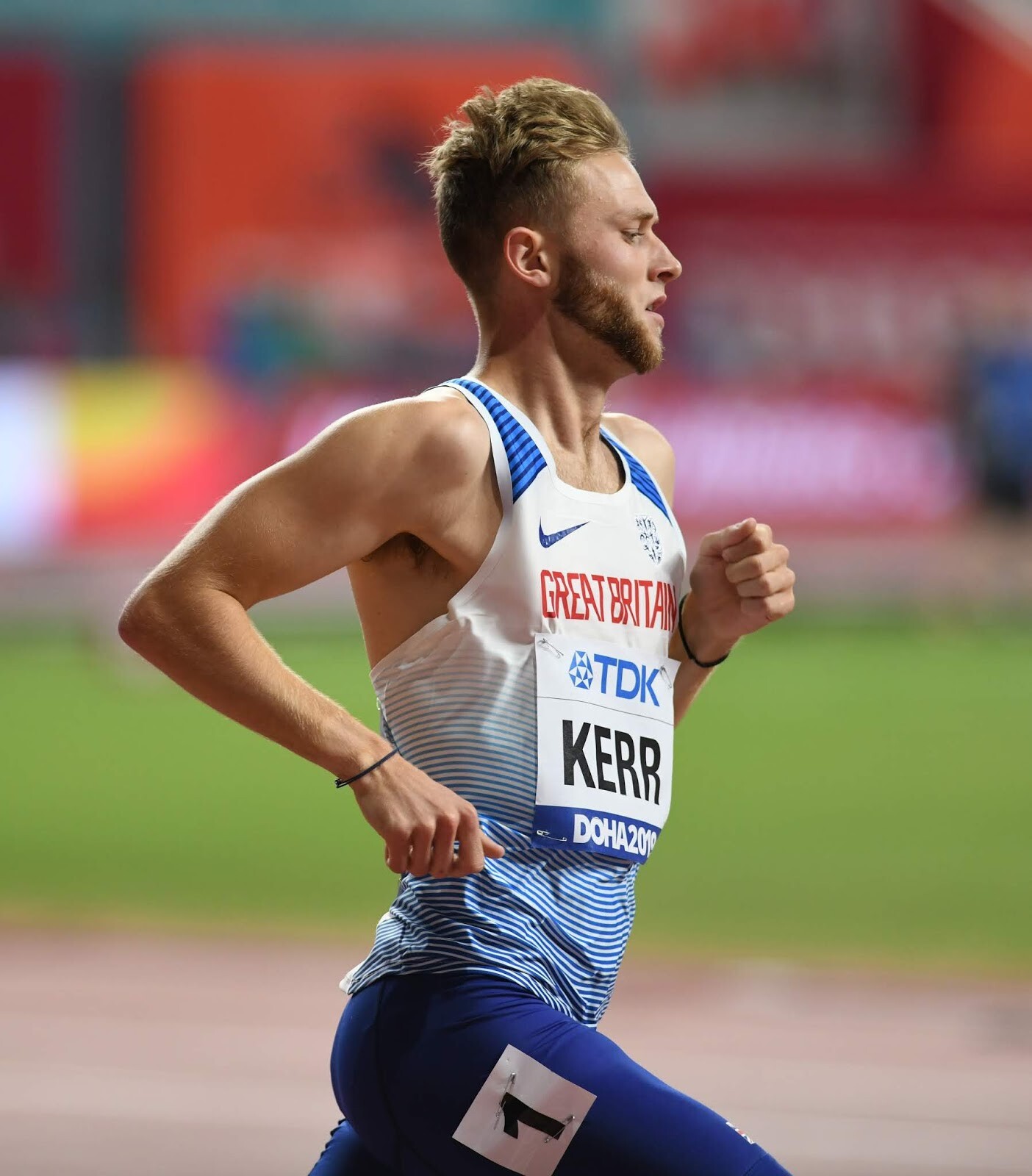
"One more medal across the men’s 1500m in the Olympics would, I believe, be unprecedented and be the most anyone has ever had in that distance.
"So, I am trying to push Scotland into a really good spot and hopefully we can come away with a gold medal next time in Los Angeles [in 2028].
"I am looking for the full set."
(09/03/24) Views: 94BBC News
Is six weeks enough time to kickstart your half-marathon training?
We get it—summer flies by in the blink of an eye. One minute you’re convinced by a friend to sign up for a fall half-marathon, and the next, you’re panicking because the race is less than six weeks away. While training for a half-marathon in six weeks is possible, there are some things to consider to avoid injury and make it to race day feeling confident. Here’s what you need to know to make the most of your six-week training window.
Assess your starting point
Typically, people preparing for a half-marathon give themselves 12-16 weeks of training before tackling the 21.1 km distance. More experienced runners, already with a solid base, may be able to prepare in six to eight weeks. If you’re already running a few times a week and can comfortably complete a 10K, you have a solid starting point. However, if you’re new to running or returning after a long break, six weeks will be challenging and could increase your risk of injury if you attempt to build mileage too quickly.
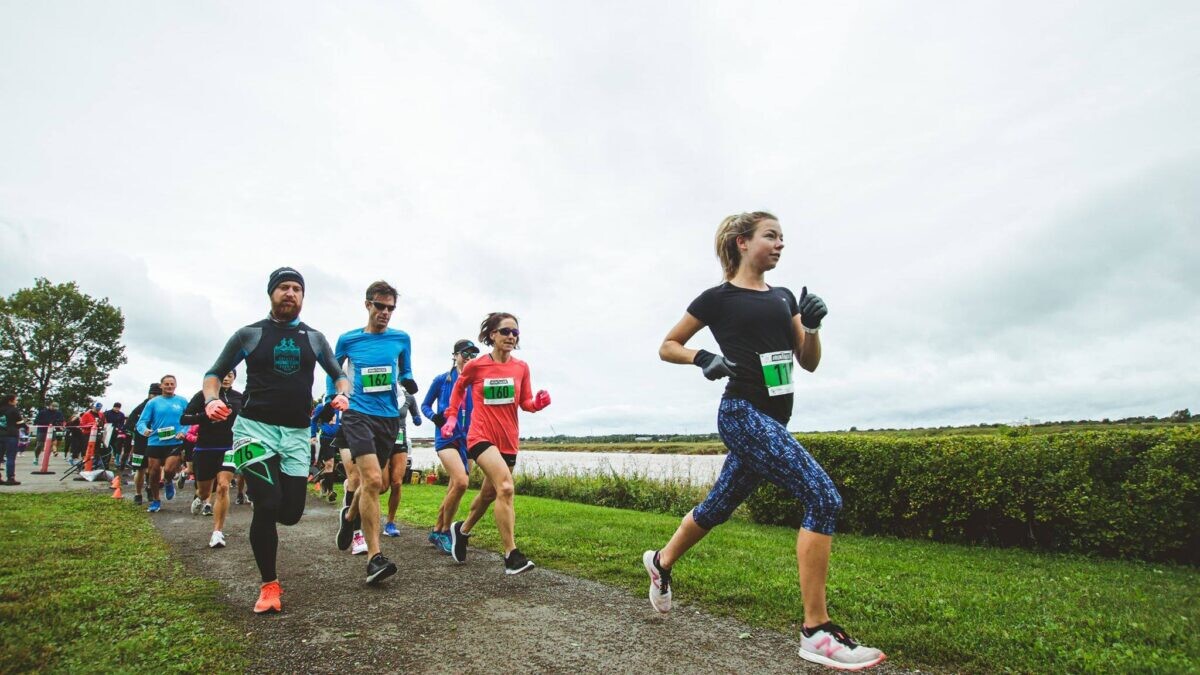
Follow the plan
If you’re starting from scratch, run three times a week for the first two weeks, with long runs of seven to eight kilometres. In weeks three and four, gradually increase your runs by a kilometre or two, and add a fourth run to your weekly training schedule. Your long runs during these weeks should be between 10 and 15 kilometres.
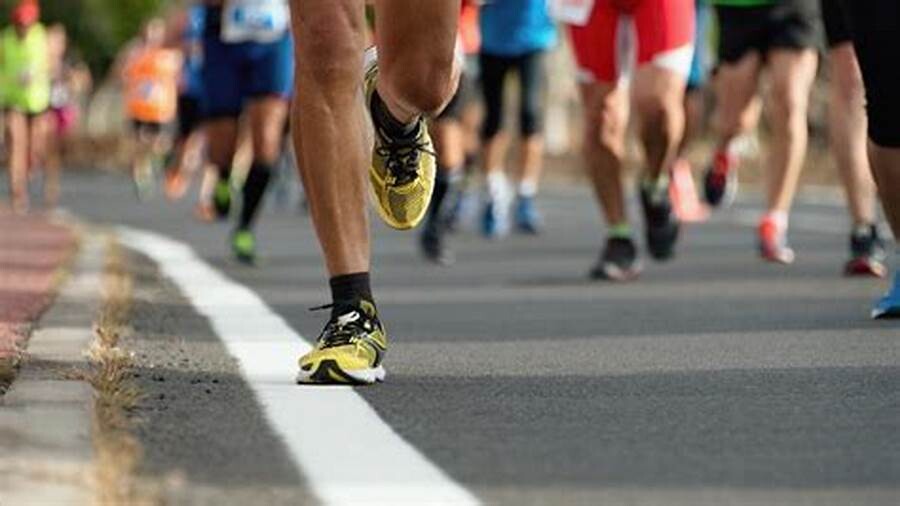
Weeks five and six are all about maintaining your fitness and staying healthy for race day. Your Week Five long run should be your longest—15-17 km—while keeping the other three runs short (five to eight kilometres), to avoid overtraining. In the sixth and final week, focus on proper rest and keeping your legs fresh for race day. Do two shorter runs leading up to the half-marathon and a light, three- to five-km shakeout run the day before the race.
Take care of your body
With such a tight training window, it’s crucial to listen to your body and maximize the effectiveness of each run. Incorporate rest days between runs to allow for proper recovery, and ensure you’re getting adequate sleep. Consider adding cross-training activities like swimming or cycling to maintain fitness without the impact of running on your rest days. Additionally, activities like stretching, foam rolling and yoga can all help keep your muscles loose and reduce the risk of injury.
Manage your expectations
A six-week training plan isn’t ideal, but it’s far better than going in unprepared and expecting a strong result. As with any skill or sport, the more you practise and train, the better prepared you’ll be for what lies ahead. It’s important to be realistic about your goals and avoid setting overly high expectations. This might not be the race where you run a personal best, but it can still be a rewarding experience. Focus on finishing strong and injury-free, rather than pushing for a specific time.
(08/30/24) Views: 92Marley Dickinson
'The sky's the limit'-Carl Lewis-inspired Louie Hinchliffe turns pro weeks after outrunning Noah Lyles
Carl Lewis protégé Louie Hinchliffe turns pro after stellar collegiate season and beating Noah Lyles in the Olympic 100m Round 1.
Carl Lewis prodigy Louie Hinchliffe has made the bold decision to leave behind his collegiate career at the University of Houston to pursue professional track and field following an impressive debut at the 2024 Paris Olympics.
Hinchliffe's standout performances have not only caught the eye of the athletics world but have also marked a new chapter in his career inspired by none other than his coach and mentor Carl Lewis.
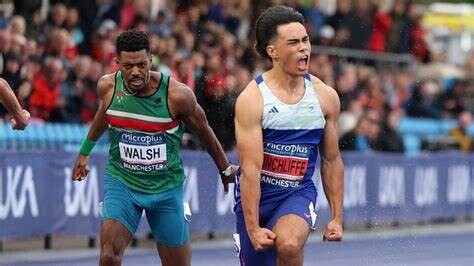
In Paris, Hinchliffe was a key component of Great Britain's bronze medal-winning 4x100m relay team. Despite not advancing to the finals in the 100m event, his times of 9.98s and 9.97s in the heats and semifinals respectively were enough to stir discussions about his future potential in the sport.
“What a season it's been. I've experienced the highest of highs in my first year at the University of Houston. I've become an NCAA champion, a National Champion, and an Olympic Semi-Finalist all whilst living out my dreams as a Cougar," Hinchliffe shared on his Instagram.
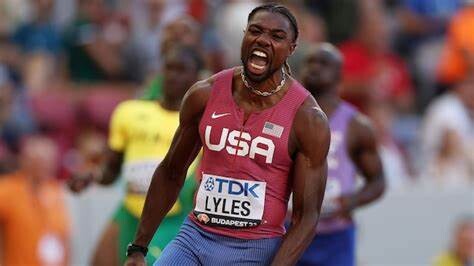
The young sprinter expressed profound gratitude toward his coaches and the staff at the University, signaling the end of his amateur phase with heartfelt thanks.
"With that being said, after speaking with my family, I have decided to forego the remainder of my collegiate eligibility and embark on a career as a professional athlete.”
Hinchliffe's time under Carl Lewis at Houston has been transformational and Lewis has previously noted Hinchliffe's rapid progress but maintained that the young athlete still had much to learn.
"He still has work to do. Obviously, he’s only been here nine months but I think he can definitely be one of the best that Britain’s ever had. He’s run 9.95, he can run faster," Lewis stated.
Under the guidance of Coach Lewis and Director of Track and Field, Will Blackburn, Hinchliffe has developed a foundation that seems poised to support a successful professional career.
“I would like to thank Coach Blackburn & Coach Lewis for your belief and support of me. I hope that someday I can give back as much as you both have given to me. I would like to thank the rest of the coaching staff, operational staff, sports medicine department, and our wonderful student managers,” he added in his statement.
The sprinter's departure from collegiate sports marks the end of an era for the University of Houston, where he not only clinched the NCAA title but also led the team to significant successes.
His performances at the Big 12 Outdoor Track & Field Championship and UK Athletics Championship where he emerged as a national champion, have set high expectations for his professional endeavors.
(08/30/24) Views: 92Festus Chuma
How Much Caffeine is Too Much Caffeine? Here's What a Sports Nutrition Expert Says.
There's no denying caffeine can take the edge off when things get dicey in a race. Many endurance athletes turn to the world's most popular drug for a performance boost, and with a long list of caffeinated gels, beverages, and chews to choose from, a turbocharged buzz is only a swallow away. But is it possible to take in too much caffeine during a workout or a race?
Well, yes-as with anything, too much can be harmful, and not everyone responds to caffeine the same way. But to get more specific, let's dive into what science says about how much caffeine to an athlete actually needs, the point of diminishing returns, and how to use it wisely in training and racing.
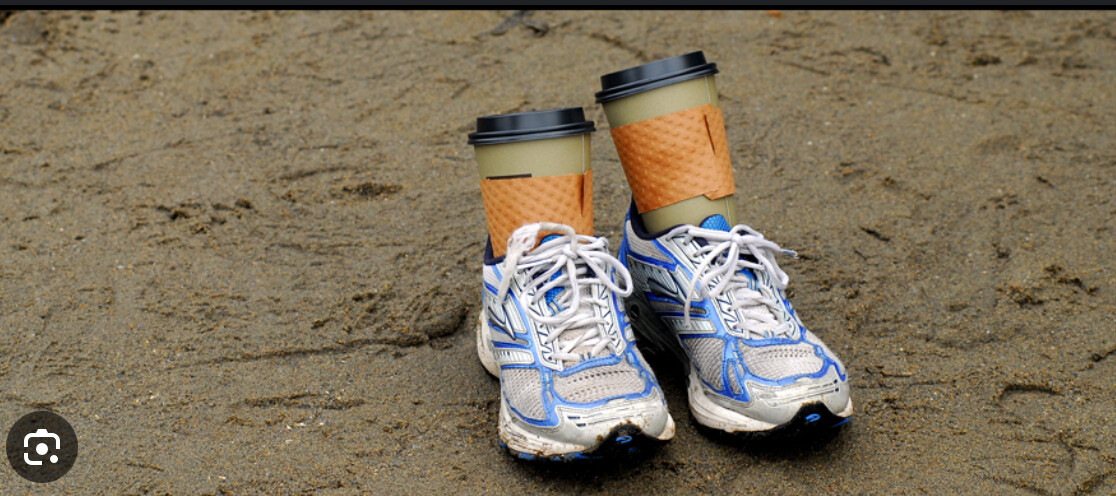
What is caffeine, and how does it help your workout or race?
Caffeine naturally occurs in coffee beans, tea leaves, cocoa beans, and cola nuts. It is also synthetically produced and added to sports gels, chews, energy drinks, sports drinks, chewing gum, and dietary supplements.
Caffeine stimulates the central nervous system (CNS) by blocking adenosine receptors in the brain, reducing perceived effort, delaying fatigue, reducing pain, and improving mental focus, attention, and motivation. These benefits apply broadly across sports, from sprints and endurance events to team sports and strength training. It's no wonder many athletes feel skipping their pre-exercise coffee puts them at a performance disadvantage.
However, the physiological response to caffeine is highly individual. While most athletes experience a performance boost to varying degrees, some are caffeine-sensitive due to genetic variations that affect the breakdown rate. These variations explain why some people experience adverse side effects at very low doses and cannot tolerate caffeine, while others can drink coffee late in the day and still sleep well.
Caffeine dosing, delivery, and side effects for endurance athletes
Caffeine peaks in the bloodstream 60 minutes after consumption and has a half-life of approximately five hours (the time it takes the body to break down 50% of it).
Interestingly, synthetic caffeine is absorbed faster by the body and thus takes effect faster than its natural counterpart. Most caffeinated sources, such as coffee, sports nutrition products, and tablets, are absorbed through the gut, pass by the liver, and enter circulation before affecting the CNS. However, caffeine from chewing gum is absorbed directly through the lining of the cheeks inside the mouth, bypasses the liver, enters the bloodstream within 5-15 minutes, and peaks by 25 minutes.
The recommended dose for a performance boost while minimizing side effects is a moderate 2-3 mg/kg of body weight. Higher doses of 5-6 mg/kg of body weight do not further enhance performance, but increase the risk of side effects. Those side effects include headaches, increased anxiety, irritability, rapid heart rate, dizziness, nausea, tremors, elevated blood pressure, insomnia, and gastrointestinal distress. Overconsumption or improper use can lead to severe consequences, including arrhythmias and potentially death.
(09/01/24) Views: 88






